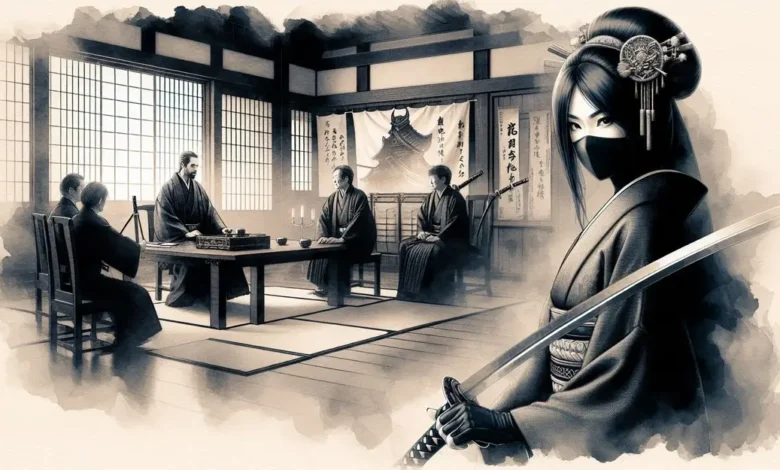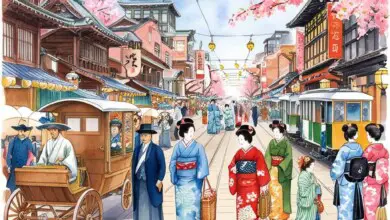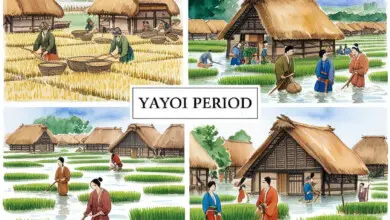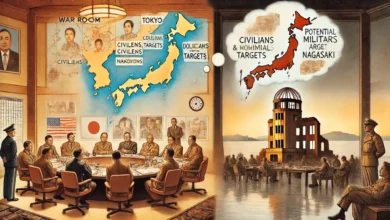Kunoichi: Remarkable Tales of Fearless Warriors You’ll Love

In the world of the shinobi, which is another name for ninjas, there were also women. These female ninjas were called Kunoichi. They were just as skilled as the male ninjas. They could move silently, hide in the shadows, and complete secret missions. But, just like the female Samurai, not many people know about the Kunoichi.
The reason why we don’t know much about these brave women is that there aren’t many old records about them. Historians and researchers have found some clues that suggest they existed. But without more evidence, it’s hard to say for sure. Some people think that the stories about female Samurai and Kunoichi are just legends. Others believe that they were real and played important roles in Japan’s history.
Even though we don’t know much about these women, their stories are still fascinating. They remind us that women can be just as brave and skilled as men. And they show us a different side of Japan’s history that we don’t often hear about. Whether they were real or not, the stories of the female Samurai and Kunoichi continue to inspire people today.
Who is Kunoichi?
The word “Kunoichi” was first used as a slang term for a lady during the Edo period. But it wasn’t used very often. Then, in 1964, an author named Yamada Futaro wrote a book called “Ninpou Hakkenden.” In this book, he used the word “Kunoichi” to mean “female ninja.” Since then, more and more people have started using this word.

Just like male ninjas, Kunoichi were trained in the art of Ninjutsu. They learned how to use many different weapons and how to be spies. But they also learned other skills. For example, they learned how to act like shrine maidens, Geishas, and even prostitutes. This way, they could go places without anyone suspecting them. Because of this, Kunoichi could go to places that male ninjas couldn’t.
The word “Kunoichi” is actually made up of three parts. Each part looks like a stroke in the Japanese character for “female,” which is “女” or “Onna.” The first stroke looks like the letter “く” or “Ku” in the Hiragana alphabet. The second stroke looks like the letter “ノ” or “No” in the Katakana alphabet. And the last stroke looks like the Kanji character “一,” which means “one.” So, when you put them all together, you get “Kunoichi!”
Controversy concerning the existence of Kunoichi
You might have seen Kunoichi, or female ninjas, in books, TV shows, movies, and comics. But did you know that some historians don’t believe they really existed?
Some researchers from Mie University, like Yuuji Yamada and Katsuya Yoshimaru, have looked into this. They say that there are no old documents that talk about female ninjas doing spy missions like male ninjas did.

According to Yoshimaru, the word “Kunoichi” comes from a modern book called “Ninpou Hakkenden” by Yamada Futaro. This book is where we get the idea of female ninjas from.
But there’s also a ninja manual called “Bansenshukai” that was written in 1676. In this book, there’s a section called “Kunoichi-no-jutsu.” This is a special kind of ninjutsu, or ninja technique, that was used by women.
The “Bansenshukai” talks about the ninja clans from the Iga and Kouka regions. According to this book, Kunoichi’s main job was to sneak into the enemy’s house and gather information. They would try to earn the enemy’s trust so they could listen in on secret conversations. When it was too hard for a male ninja to do a spy mission, they would use Kunoichi-no-jutsu.
There’s also a story about a real female ninja named Mochizuki Chiyome. She was from a noble family and lived in the 16th century. She fought for a warlord named Takeda Shingen and recruited women to join a group of hundreds of spies. This story helps support the idea that Kunoichi really did exist.
Kunoichi’s Weapon

The “Bansenshukai” is a book that tells us a lot about Kunoichi, or female ninjas. According to this book, Kunoichi were trained to use many different weapons. One of these weapons was called the Neko-te. This was a fake fingernail that they could use to stab their enemy’s neck. Sometimes, they would even put poison on the Neko-te before they used it.
But that’s not all. Kunoichi also used a weapon called the Tessen. This was a folding fan made of metal. Back then, many people carried fans around with them. So, if a Kunoichi had a fan, nobody would think it was strange. But if they needed to, they could use their fan as a secret weapon.
Kunoichi also knew how to use poison in other ways. For example, they could put poison in their enemy’s drink. This was a quick and sneaky way to defeat their enemy. Even though being a Kunoichi was dangerous, they were very skilled and brave. They used their weapons and their tricks to protect their people and their land.
Mochizuki Chiyome, legendary female ninja

Mochizuki Chiyome (望月 千代女) is a symbol of Japanese women’s courageous battle spirit when she led the Kunoichi army of hundreds of people serving the Takeda clan. As a “martial arts writer,” Chiyome is also a poet.
She is a descendant of the 15th-century Ninja Mochizuki Izumo-no-Kami, of the Koga Ninja clan, and married to Mochizuki Moritoki, the Samurai lord of Saku District, Shinano Province (now Nagano Prefecture) (now Nagano Prefecture). Her husband is herself a distant relative of Izumo-no-Kami.

But then, something sad happened. Her husband, Moritoki, died in a series of battles called the Kawanakajima engagements. These battles happened from 1553 to 1564 between two warlords, Takeda Shingen and Uesugi Kenshin.
After her husband’s death, Chiyome was supported by her husband’s uncle, Lord Takeda Shingen. He was the leader of the Takeda clan. Lord Takeda gave Chiyome a special job. He asked her to create a team of female ninjas to fight against their enemies.

Lord Takeda’s plan was to train an army of female spies. These spies would gather information for the Takeda clan. He thought that Chiyome was the perfect person for this job because she came from the famous Koga ninja family.
Chiyome accepted this job and began her plan in a village called Nezu in the Shinshuu region, which is now known as Tomi in Nagano prefecture. She sought out girls who could become ninjas, recruiting flower girls, those who had lost their families in the wars, and orphaned young girls. Through this careful selection, Chiyome created her team of Kunoichi.

Mochizuki Chiyome has inspired movies and video games
As the rare real female Ninja in history, Chiyome became an inspiration for numerous filmmakers, painters, and video game producers. In the 1979 movie “Sanada Yukimura no Bouryaku” (English title: The Shogun Assassins), actress Yatsuko Tanami played the female Ninja Chiyome; in addition, she also became the primary character in the historical novel “Risuko” by David Kudler.

In particular, Chiyome is the female Ninja image utilized by numerous video game producers, such as the main heroine in the game “Red Ninja: End of Honor” or appearing in “Samurai Warriors,” “Ambition: Nobunaga’s Souzou (DLC),” “Puzzle & Dragons,” and “Toukiden: The Age of Demons.”
In addition, the women’s football club of Iga City, Mie Prefecture, also took the name of the female Ninja as the team name “Iga FC Kunoichi” or the movie “Kunoichi” (2011) by director Seiji Chiba were all inspired by the name of the team. These mysterious female spies




